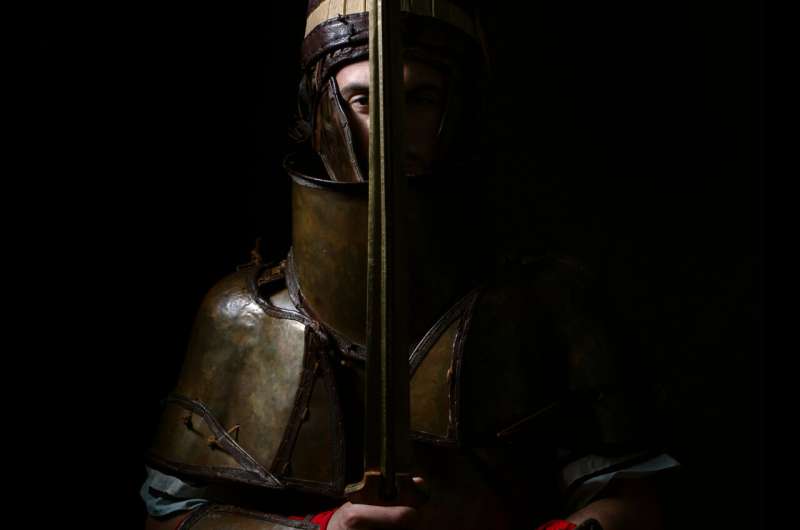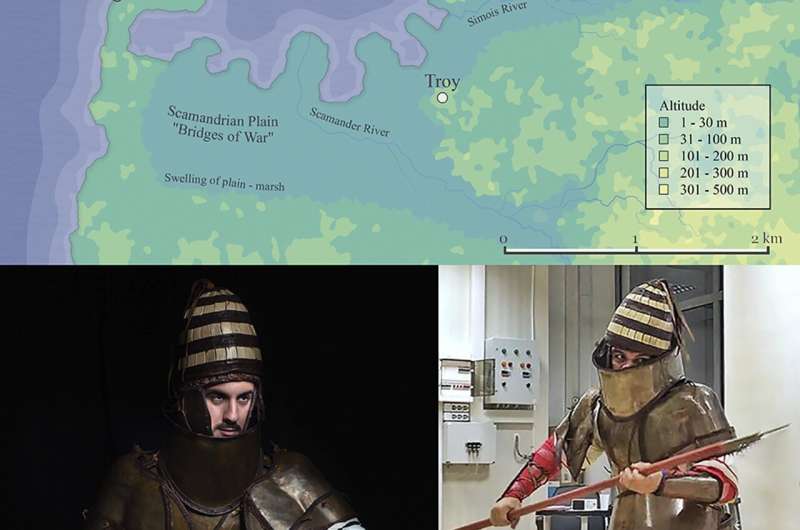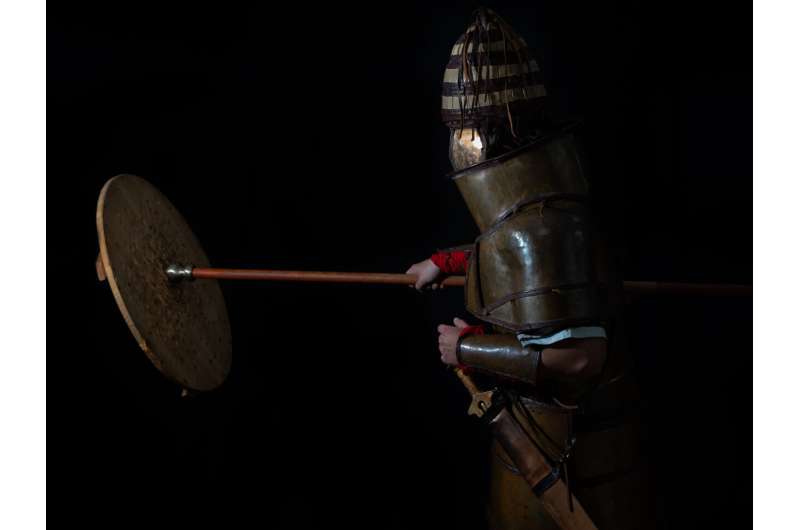This article has been reviewed according to Science X's editorial process and policies. Editors have highlighted the following attributes while ensuring the content's credibility:
fact-checked
peer-reviewed publication
trusted source
proofread
Ancient Mycenaean armor tested by Marines and pronounced suitable for extended combat

A famous Mycenaean suit of armor was not just ceremonial, but suitable for extended combat, according to a study published May 22 in the open-access journal PLOS ONE by Andreas Flouris of the University of Thessaly, Greece and colleagues.
One of the oldest known suits of European armor is a 3,500-year-old suit found near the village of Dendra, a few kilometers away from ancient Mycenae.
Since its discovery in 1960, it has been unclear if this was a ceremonial suit or if it was suitable for battle. This question has important implications for understanding warfare in Late Bronze Age Europe, but no historical accounts describe the use of this style of armor. In this study, researchers combine historical and experimental evidence to investigate the combat suitability of the Dendra armor.
The authors recruited 13 volunteers from the Marines of the Hellenic Armed Forces, equipped them with replicas of the Dendra armor and Bronze Age weapons, and ran them through an 11-hour simulated Bronze Age combat protocol. This combat simulation was developed based on historical accounts from Homer's Iliad along with additional physiological and environmental evidence to create an approximation of typical diet, activities, and maneuvers of the Mycenaean military.

The experiment found that the replicated Dendra armor did not limit a warrior's fighting ability or cause severe strain on the wearer.
These results suggest that the Dendra armor was battle-worthy, implying that the Mycenaean's powerful impact in Mediterranean history was due partly to their armor technology.

To supplement these results, the authors developed a freely-available software which enables simulation of combat conditions to test the hypothetical efficacy of the armor in more varied scenarios. Further research into Mycenaean combat technology will continue to illuminate details of the Late Bronze Age and the transition into the Iron Age.
More information: Analysis of Greek prehistoric combat in full body armour based on physiological principles: A series of studies using thematic analysis, human experiments, and numerical simulations, PLoS ONE (2024). DOI: 10.1371/journal.pone.0301494
Journal information: PLoS ONE
Provided by Public Library of Science




















